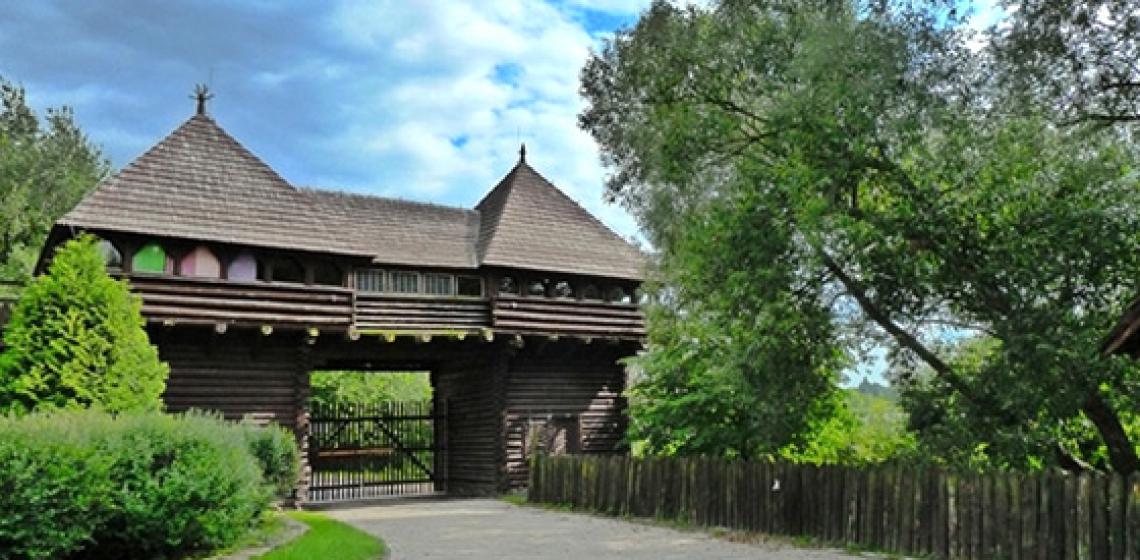Muzeum Pierwszych Piastów na Lednicy (PL)

The Piast royal dynasty was the first historical ruling dynasty of Poland between the 10th century and 1370. The stronghold Ostrów Lednicki on an island in Lake Lednica is thought to be one of the seats of the first Piast kings. You could say, Polands origins are here.
Ostrów Lednicki is the largest (approx. 7.5 ha) among the three islands of the Lednica Lake. It forms a naturally defensive territory, which attracted people from the earliest times. At the end of the 9th century, in the south-western part of Ostrów a small stronghold (approx. 40m in diameter) was erected. During Mieszko I and Bolesław the Brave's reign a new, large stronghold (approx. 2.5ha) was erected, becoming one of the most significant residences of the rulers. Within its ramparts a palace with a chapel, and in the northern part a church were built. Around the mid 11th century the island became the seat of a castellan. Gradually, Ostrów lost its significance and the castellan himself resided in nearby Pobiedziska. The decline of Ostrów Lednicki is connected with the raid of the Teutonic Knights in the year 1331.
The movie 'Stara baśń' (the ancient tale), after the novel by Kraszewski describes the early Polish state and the stronghold in a heroic manner – parts of it were filmed at the archaeological museum Biskupin.
Research started here as early as the 19th century. Archaeological research on Ostrów Lednicki produced a great number of artefacts dated to the 10 - 12th century. Among them a collection of military equipment (approx. 300 pieces), the most numerous in this part of Europe, should receive special attention. It includes weapons richly encrusted with silver and copper, spearheads, stirrups, ring-mail, a helmet with nose-guard and swords.
In 1969 the “Museum of the First Piasts on the Lednica Lake” (Muzeum Pierwszych Piastów na Lednicy) was established for the protection of the island. In 1994 the site gained the status of Monument of History. The rampart today is still 8 metres high, built of timber and earth, with rows of logs placed longitudinally and transversely in alternate layers, and strengthened from outside by cobblestones. The excavations showed that the ramparts were erected in three phases.Near the entrance one finds a stone palace which included a chapel. During the times of the splendour of the palace, the stone buildings were accompanied by wooden structures of various sizes. Most of them are the remains of houses but some could fulfil different functions (e.g. scriptorium, workshops).
In the northern area of the stronghold used to be a church. In the centre of the nave two stone tombs were excavated, where Piasts of unknown names were buried.
The island was connected to the mainland through two bridges. The western Poznań bridge was 440 metres long, the Gniezno Bridge 170 metres. A market place could have been situated near the western bridge, on an elevation of the area. Most probably a number of craftsmen operated here periodically, including a potter, carpenter, antler-worker, foundry man, tanner-saddler. Next, we walk past a reconstructed farmstead, which refers to the remains of early medieval structures excavated in the area. Experimental archaeology workshops take place here in summer.
